
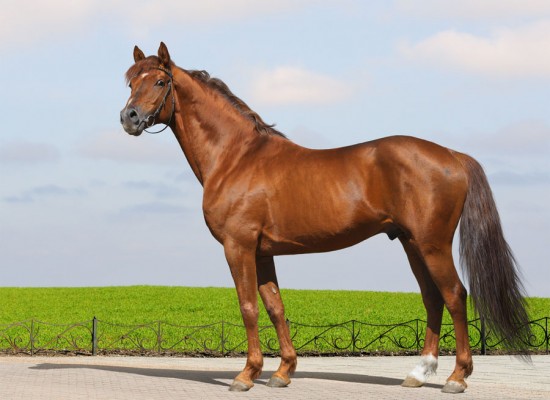
If you are looking to buy a horse or pony, the chances are that during your search you will have been confronted with the term 'conformation' time and time again. This word can create some confusion, especially for first time buyers or those new to the equestrian world. So what does this expression mean, and why is it so important?
'Conformation' refers to how the horse is put together - that is, his skeletal outline and body shape, and not his general condition or body weight (as if often mistakenly thought). The word is most commonly encountered when a horse is being assessed as a prospective purchase, and is also frequently heard in showing circles. This is not simply down to a human desire for the animal to be pleasing on the eye; the way in which a horse is put together dictates its movement, performance ability and suitability for certain disciplines, as well as having a strong bearing on its future health and durability.
Of course, not all horses can be perfect and nor need they be - one intended for just light hacking will not need the supreme straightness and balance of a potential grand prix dressage horse, and therefore certain faults can be forgiven depending on the intended function of the animal. Different breeds also have different standards of conformation - what is considered ideal in one type of horse may not be so in another. A draught horse, for example, would not be expected to have the sloping shoulder that is crucial to a riding pony such as the Connemara, nor would the chunky neck of the Dales be welcomed on a Thoroughbred deemed for the show ring or racing track. Furthermore, let us not forget the old saying, 'handsome is as handsome does': whilst poor conformation usually leads to poor performance, a few horses have been known to disprove this theory and are able to give a comfortable ride despite their defects.
Nonetheless, as a horse's way of going is so strongly influenced by his conformation, it is advisable for buyers to have some knowledge of common faults and their potential consequences.
The head should be in proportion with the rest of the body. Defects such as a parrot mouth (overshot jaw) and sow mouth (undershot jaw) are undesirable, and can cause problems with the horse's ability to graze efficiently.
Especially important is the angle at which the head meets the neck; if this is too narrow, problems with breathing are often encountered.
The neck is an important feature of conformation as it affects balance and plays a major role in head carriage. If it is too short or thick, the horse will find it difficult to flex or to round over a fence, and so will have limited capabilities in dressage and jumping. A long neck can also lead to problems with self-carriage, as the horse will have a tendency to be on the forehand due to the disproportion in weight. A similar issue will occur with an animal whose neck is low set, and so horses with this particular fault are unlikely to enjoy success in dressage or showing.
Even more undesirable is the ewe neck, which has the appearance of being on upside down due to its upward bend and build up of muscle on the underside. This defect can seriously affect the way of going: the head carriage will be too high, the back hollow, correct flexion will be difficult and back injuries likely.
The swan neck is one that is set on too high and has a curve that is over-
pronounced. Like the ewe neck, this fault will cause the horse to hollow his back.
A sloping shoulder is essential for good movement and a ground-covering stride. Whilst an upright shoulder is an accepted quality in a draught horse, it will produce a choppy, uncomfortable gait that is particularly unsuitable for dressage and showing.
The desirable length of a horse's back is very much dependant on the type of work for which he is being considered. Draught horses benefit from being closely coupled, whilst a bit more length is needed for speed. The loins, however, should be short and strong no matter what the discipline.
A sway back that is dipped between the withers and the croup is a typical fault in horses that have too much length of back and loin, and is a sign of weakened ligaments. Frequently seen in broodmares, this defect makes impulsion almost impossible to achieve and usually makes horses unsuitable for riding. The convex roach back is another sign of weakness, and one that will impact on the animal's flexibility.
The croup is the area between the loins and the beginning of the tail. In terms of ideal conformation it should be fairly flat, especially if the horse is to be used for speed. The goose rump is a sharply slanted croup that, whilst considered a conformation fault, is often allied with good show jumpers and thus welcomed in this particular sport.
The chest should be deep, muscled and of a reasonable width to allow room for the heart and lungs. Too narrow a chest will place the forelegs too closely together, resulting in interference in movement. Too wide a chest, on the other hand, will produce a waddling gait that lacks athleticism and decreases stamina. A prominent sternum that puts the forelegs too far under the body creates a lack of balance, and is known as a pigeon breast.
The knees should be large, broad and flat. A horse that is over at the knee is prone to stumbling, whilst the backward-sloping calf knees can lead to tendonitis. Small knees are also to be avoided as they are unable to absorb concussion effectively.
When assessing the hind limbs, it is best to draw an invisible line from the point of buttock down through the centre of the hock, fetlock and foot. If the hocks come outside of this line they are said to be bowed - a condition that causes strain and can lead to problems such as thoroughpin.
Cow hocks are those that turn inwards, and are a conformational defect that limits speed and is detrimental to movement. The excessively angled sickle hocks place the lower leg too far underneath the animal, and nearly always lead to unsoundness.
If a horse is pigeon-toed, the toes of his hooves will turn inward and he is likely to move with a paddling action, making him unsuitable for disciplines that demand speed and agility. This fault is also associated with ailments such as ringbone, sidebone and bruised soles. Toed-out horses are surprisingly common, and may sometimes be described as being splay-footed. The winging motion that this conformation fault produces can put extra stress on the inside of the pastern.
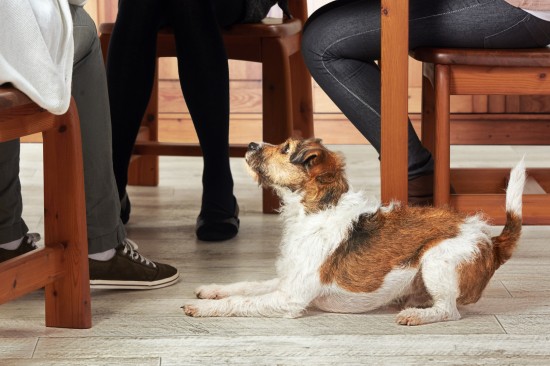 Does Your Dog Beg For Snacks ? It Could Be Why Theyre Piling On The Pounds
Does Your Dog Beg
Does Your Dog Beg For Snacks ? It Could Be Why Theyre Piling On The Pounds
Does Your Dog Beg
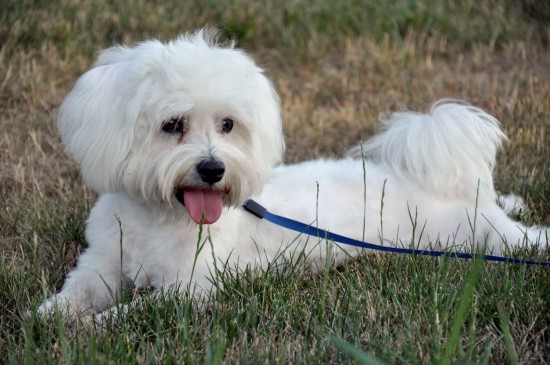 Maltese Dog Hereditary Health And Health Testing
Maltese Dog Hered
Maltese Dog Hereditary Health And Health Testing
Maltese Dog Hered
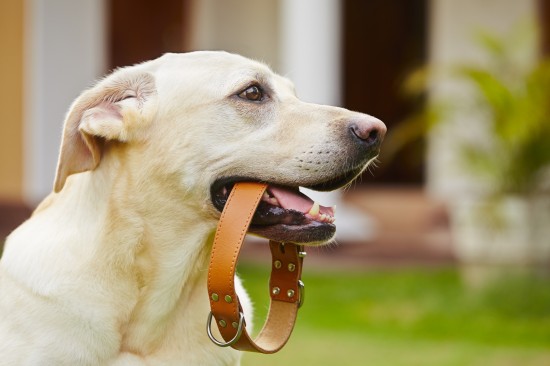 Is It Okay To Take A Dog For A Walk When Shes In Season?
Is It Okay To Tak
Is It Okay To Take A Dog For A Walk When Shes In Season?
Is It Okay To Tak
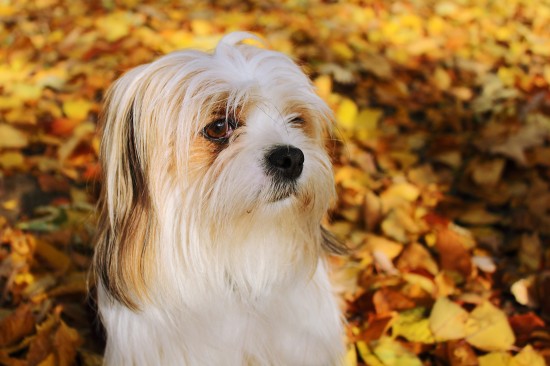 Acute Moist Dermatitis In Dogs
Acute Moist Derma
Acute Moist Dermatitis In Dogs
Acute Moist Derma
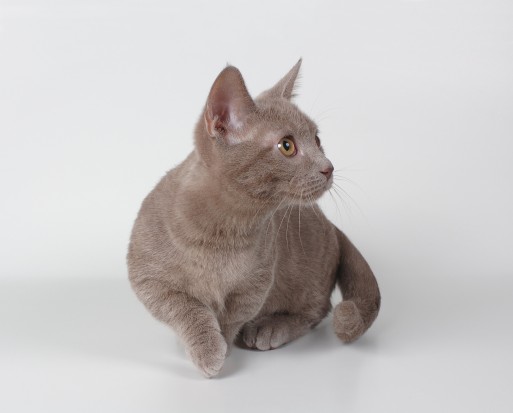 The Munchkin Cat - An Unusual Breed!
The Munchkin Cat
The Munchkin Cat - An Unusual Breed!
The Munchkin Cat
Copyright © 2005-2016 Pet Information All Rights Reserved
Contact us: www162date@outlook.com